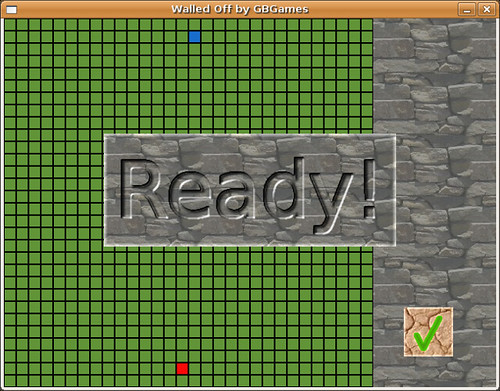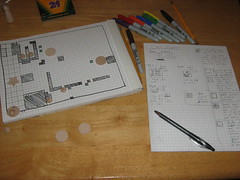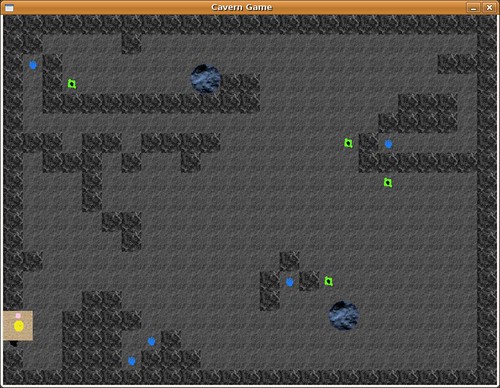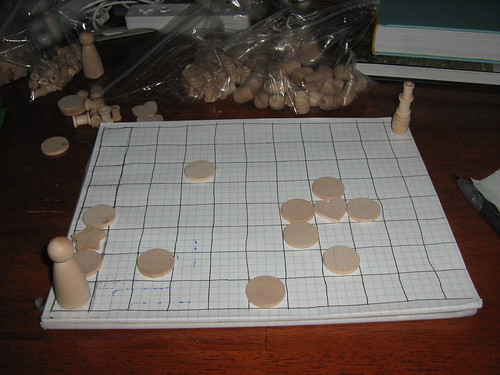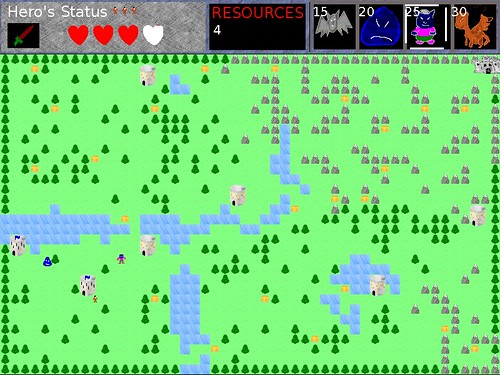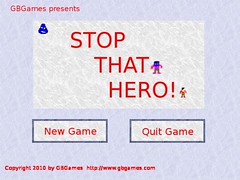Last time, I talked about my first ever game jam and my first year’s worth of Ludum Dare events. After many years of thinking about it, it was nice to finally get some wins under my belt as well as a couple of good lessons. If you didn’t read it, see my history of game jams part 1.
My second Ludum Dare year
April 17th, 2009 was the start of Ludum Dare #14. The theme, Advancing Wall of Doom, was announced while I was out at a party for way too long, which meant I got a late start.
I remember thinking about something along the lines of Rampart, and eventually settled on a design in which you are trying to capture resources with your walls while preventing your opponent from stealing them. I had some neat design ideas and concepts, but almost no code after the first 24 hours. Oof.
Back then, Ludum Dare had medals for each category, and not only can your game be ranked, but the fun side competitions were the Community and Food compos. I got gold for my food pictures, and it was the only reason I submitted anything, because when the deadline hit, I had nothing else to show for the weekend but a button you could click.
Since I was writing everything from scratch, and my previous attempts had either keyboard input or paid attention only to mouse movement, I learned how hard simple GUI elements such as buttons were to implement. It turned out that they have a lot going on under the hood.
I really wish I had written a post-mortem for this failure, too. I think it would have been insightful today.
That year’s August, Caverns was the theme for Ludum Dare #15. I had a good idea right away, and I ran with it.
I took advantage of some new prototyping lessons I learned from Ian Schreiber’s free Game Design Concepts course, and I think I was able to put those lessons to good use. The final game had a lot of help getting finished because I spent some time figuring things out with paper and wooden pieces.
My Mineral Miner post-mortem shows that rapid prototyping works well, and writing good, non-buggy code would help too. Graphics and sound are great for polish, but a lot can be done with terrible placeholder art. I also need to work on my pacing so I’m not wasting time figuring out what to do at any given moment. With only 48 hours, every minute counts. Even though I took in a soccer game and still managed to get a game finished, I could probably have used those few hours to make things better. I would try to make sure my calendar was blocked for for Ludum Dare weekends from then on.
Full-time Indie Game Jam
I missed Ludum Dare #16 and #17, but Ludum Dare #18 was a special one in my heart. It was the first one I participated in as a full-time indie game developer. In 2010, I had quit my job earlier that summer to be an independent game developer, but I had no dream game I was trying to make. When August came, I knew I was participating in Ludum Dare.
The theme was Enemies as Weapons, and I normally don’t like to think about the potential themes before it is announced, this one was standing out in my mind. I wanted to make a reverse Super Mario Bros in which you were Bowser sending Goombas and Koopa Troopas after the AI-controlled hero. I had just been learning a lot about game artificial intelligence, and this kind of project would be perfect for putting it into practice, except I would then also have to learn platformer physics.
So I changed the concept to a reverse Legend of Zelda, in which you were sending out minions to stop the hero from storming your castle and destroying you.
I spent some time coming up with other concepts before settling back on the reverse Legend of Zelda. My prototypes look very much like the end result.
I created a project backlog because I knew this project was going to be ambitious. I was making an epic game.
As my Stop That Hero! post-mortem says, I missed the original 48-hour deadline, but luckily the 72-hour jam compo was introduced and so I used my Monday (because I was full-time indie and could use my days however I wanted) to finish the game.
I spent too long on the UI again, and I had to scale back on my ambitions, but I was very pleased with my casual strategy game. Unfortunately, the jam compo wasn’t very popular then, so not many people played or rated my game, but the October Challenge proposed by Mike Kasprzak was coming, and now I had a game I wanted to make. I made this game in 72 hours. What could I make in another month?
It turns out that it took me another year to make Stop That Hero! into a more fleshed out game. Oof.
More Game Jams
I was a full-time indie by this point. I had all the time in the world to participate in game jams, but I also had to do work that brought in money. What did I do next in terms of game jams?
I’ll write about it next time.

